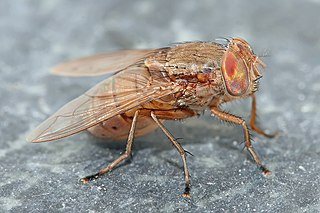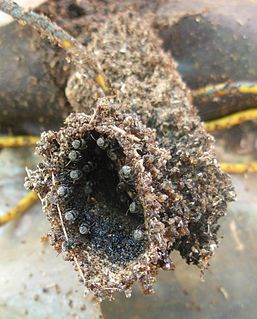
The sac spiders of the family Clubionidae have a very confusing taxonomic history. Once, this family was a large catch-all taxon for a disparate collection of spiders, similar only in that they had eight eyes arranged in two rows and conical anterior spinnerets that touched, and were wandering predators that built silken retreats, or sacs, usually on plant terminals, between leaves, under bark, or under rocks. These are now recognized to include several families, some of which are more closely related to the three-clawed spiders, like lynx and wolf spiders, than to Clubionidae and related families.

Norman Ira Platnick was an American biological systematist and arachnologist. At the time of his death, he was a Professor Emeritus of the Richard Gilder Graduate School and Peter J. Solomon Family Curator Emeritus of the invertebrate zoology department of the American Museum of Natural History. A 1973 Ph.D. recipient at Harvard University, Platnick described over 1,800 species of spiders from around the world, making him the second most prolific spider taxonomist in history, behind only Eugène Simon. Until 2014 he was also the maintainer of the World Spider Catalog, a website formerly hosted by the AMNH which tracks the arachnology literature, and attempts to maintain a comprehensive list, sorted taxonomically, of every species of spider which has been formally described. In 2007 he received the International Society of Arachnology's Bonnet award, named for Pierre Bonnet, in recognition of his work on the catalog.

Bengalia is a genus of blow flies in the family Calliphoridae with one authority considering the genus to belong to a separate family Bengaliidae. These bristly and, unlike the greens and blues of most calliphorids, dull coloured flies, are especially noted for their relationship to ants. Little is known of their biology and life-cycle, although adults of many species are kleptoparasitic on ants and will snatch food and pupae being carried by ants or feed on winged termites. The apt name “Highwayman Fly” was given by an early observer of their way of robbing ants. Very little is known about their breeding habits. The genus is found in the Afrotropical and oriental region with one species from Australia possibly a recent introduction.

The Mexican vole is a rodent that has similar characteristics to a mouse. The Hualapai Mexican vole were previously listed on the endangered species list and have been removed since July 24th, 2017 from its original listing on October 1st, 1987. They are known to have a cinnamon-brown coat, with a short tail and long fur. There are 3 main subspecies of the mexican voles: Hualapai Mexican vole, Navajo Mexican vole, and Mogollon Mexican vole. The Navajo Mexican vole has a longer body, tail and skull that is also broader. The Mogollon Mexican vole is similar to the Hualapai Mexican vole, but has brownish-gray fur.
The Santander blind snake is a species of snake in the family Leptotyphlopidae. The species is endemic to Colombia.

Nyssus coloripes, known as the orange-legged swift spider, is a spider belonging to the family Corinnidae. It is found commonly in Australia and New Zealand.
The Reptile Database is a scientific database that collects taxonomic information on all living reptile species. The database focuses on species and has entries for all currently recognized ~13,000 species and their subspecies, although there is usually a lag time of up to a few months before newly described species become available online. The database collects scientific and common names, synonyms, literature references, distribution information, type information, etymology, and other taxonomically relevant information.

The Indian stingless bee or dammar bee, Tetragonula iridipennis, is a species of bee belonging to the family Apidae, subfamily Apinae. It was first described by Frederick Smith in 1854 who found the species in what is now the island of Sri Lanka. Many older references erroneously placed this species in Melipona, an unrelated genus from the New World, and until recently it was placed in Trigona, therefore still often mistakenly referred to as Trigona iridipennis. For centuries, colonies of T. iridipennis have been kept in objects such as clay pots so that their highly prized medicinal honey can be utilized.

Trachelidae is a family of araneomorph spiders first described by Eugène Simon in 1897 as a subfamily called "Tracheleae". The Trachelidae family, also known as "ground sac spiders", is within the group of spiders known as the RTA clade, which includes mostly wandering spiders that do not use webs. Spiders in the Trachelidae family are characterized as being 3-10mm long and having a red cephalothorax and a yellow/tan abdomen. They are commonly found indoors. It was placed in the family Clubionidae, then later in Corinnidae when the Clubionidae were split up. The first study that suggested Trachelidae should be considered its own family was done by Deeleman-reinhold in 2001 as part of an analysis of RTA Clade spiders. An analysis by Martín J. Ramírez in 2014 suggested that it was not closely related to other members of the Corinnidae, and was better treated as a separate family. It was then placed in the CTC clade of spiders, or the Claw Tuft Clasper clade, which is a group of spiders that have two tarsal claws with tufts of hair.

Clubiona robusta or the stout sac spider is a common spider found in Australia. Females are often found living in a silken brooding chamber, under bark of eucalyptus trees. They are small sized spiders. Body length 13 mm for females, 10 mm for males.
Utivarachna is a genus of Asian araneomorph spiders in the family Trachelidae first described by Kyukichi Kishida in 1940. It was largely ignored until Christa L. Deeleman-Reinhold revised the sac and ground spiders in 2001, transferring some species from Trachelas and adding several new ones. The genus was further expanded in 2014 and 2015.

Elaver is a genus of sac spiders first described by Octavius Pickard-Cambridge in 1898.

Acrocera orbicula, also known as the top-horned hunchback, is a species of fly belonging to the family Acroceridae. The species has a holarctic distribution, ranging from North America to the Palaearctic.
Scotinella dixiana is a species of phrurolithid spider first described in 1957 from specimens collected at Greensburg, Louisiana in 1936. They are small spiders, the females being under 1/10th inch in length. The females have a dark yellowish brown carapace with faint black radiating streaks and a narrow marginal black seam, and a dusky abdomen marked with a broad transverse band near the middle, two pale spots near the base and four narrow pale chevrons in the caudal half. The male's coloration is similar to that of the female, with a shining brown scutum marked by a single broad pale stripe near the middle. The species closely resembles Scotinella redemptus but is smaller. Some scientific classification schemes place the species in the family Corinnidae.
Elaver achuca is a species of spider in the spider family Clubionidae. It was first named Clubionoides achuca in 1966. The species is close in structure and appearance to Elaver excepta, but the ventral division of E. achuca's tibial apophysis is not as broad as that of E. excepta, and the dorsal division is strongly curved.
Elaver madera is a species of spider in the spider family Clubionidae. It was first named Clubionoides madera when circumscribed in 1966. It is closely allied to Elaver texana and its related species, which are mostly found in the American tropics.
Clubiona marna is a species of spider in the spider family Clubionidae. It was first circumscribed in 1966.

Megaloblatta is a genus of cockroaches in the family Ectobiidae. It includes the largest living species of cockroach, Megaloblatta longipennis, which can grow to 9.7 centimetres (3.8 in) in length and have a wingspan of up to 20 centimetres (7.9 in).










